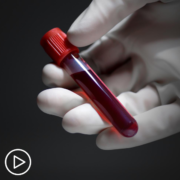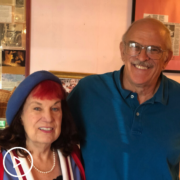Which MPN Treatment is Right for You? Factors to Consider
Which MPN Treatment is Right for You? Factors to Consider from Patient Empowerment Network on Vimeo.
Dr. Srdan Verstovsek, discusses how multiple factors, including diagnosis and symptom burden, determine which MPN treatment path may help improve a patient’s outcome.
Dr. Srdan Verstovsek is Chief of the Section for Myeloproliferative Neoplasms in the Department of Leukemia at The University of Texas MD Anderson Cancer Center. Learn more about Dr. Verstovsek, here.
Related Resources

|

|

An Expert Shares Key Steps to Take Following an MPN Diagnosis |
Transcript:
Dr. Srdan Verstovsek
So, we talk about diagnosis, and then prognosis, and then go over [stem cell] transplant. Now, the transplant is done in only less than 10 percent of the patients because most of the patients are elderly. That’s why you have the disease.
They might not have a donor. They may be sick. There are multiple reasons, so transplant happens in less than 10 percent of the patients. Once we are over that, you say, “What’s wrong with the patient?” Not wrong in terms of dying, but do you have a significant anemia? Do you have an enlarged spleen? Do you have a bad quality of life when we talk about myelofibrosis? All of this that I have talked so far, applies to myelofibrosis. These are the three main reasons for initiating of therapy, usually. Significant anemia, significant bad quality of life, and significant symptom related to the big spleen. You would then introduce therapies.
For the splenic symptoms, we usually prescribe JAK inhibitors. That would be standard practice. For anemia, we have medications from injections under the skin, to some pills. No real approved therapy for anemia, but whatever we can do help patients counteract those problems because slowly over time they’ll get worse and worse, and people die with myelofibrosis between five and seven years.
So, we wanna combine medications. We’re gonna introduce medications as soon as something wrong with the patients to improve whatever is wrong so that the quality of life can continue at a decent level.
Let me go back a little bit to essential thrombocythemia and polycythemia vera, ET and PV. These two conditions are considered rather benign. They should not much effect the longevity, perhaps PV can. And if they do, the main reason for dying from ET and PV is the blood clot or thrombotic event.
This is what we say, usually. A blood clot or some bleeding usually clots in the heart, or the brain, or the lungs, can kill the person. So, we don’t usually talk about the life expectancy in terms of genetic mutations, or abnormalities in chromosomes, or something that will kill the patient outside of the blood clotting risk.
So, what we are talking about then, is after diagnosis, we are talking about the prognosis, when we talk about ET and PV, prognosis is related to what’s your thrombotic risk? So, we talk to patients with ET and PV about thrombotic risk assessment.
And typically, age over 60, or having a history of blood clot, we’ll say yes that patient is a high risk patient with ET, or high risk patient with PV, for the blood clot. And we will be treating patients for that risk in different ways.
So, it’s a little bit different angle here on what we try to achieve in ET and PV patients. More benign, more chronic, assessment of the risk of clotting and control the blood count, and occasionally when we need, control the spleen symptoms. But different ballgame and ballpark then the myelofibrosis part.
There are, obviously, standard practice protocols in terms of what do you do? Right? So, if we are talking about ET and PV, you would say, if you are – as your remember now, we divide patients in those with the low risk of blood clot, and high risk for blood clot. For low risk, we just give people baby aspirin, and if they have PV, we phlebotomize the patients, blood-letting.
So, not much experimentation there. But there are studies that one can join if there are too many phlebotomies, for example, too many blood-letting episodes. And there are studies with medications that would be decreasing that need completely.
There are also studies in patients that are high risk for blood clotting, which typically would be treated with hydroxyurea, chemotherapy by mouth.
There are new versions of the interferons, biological agents given under the skin every two weeks, that would perhaps be taken instead of a standard practice hydroxyurea.
Not too many studies in ET and PV, really. Some. But in myelofibrosis, there are many because with ruxolitinib, for example, which has been around for about nine years, it’s a JAK inhibitor, you get in many patients good control of the splenic symptoms, but it does not last forever, and in some patients, it may benefit to some degree, but not completely.
So, there are many studies where you can add another medication to ruxolitnib a JAK inhibitor, to boost what it does more of the splenic symptoms controlled, or to add another benefit. The JAK inhibitors do not, by and large, improve the anemia, so how about adding anemia drug to ruxolitnib.
So, combination studies are many underway, so you can actually enroll – even with the newly diagnosed myelofibrosis patients, in the need of therapy, in a clinical study. Not to say, after JAK inhibitors in a second line. That’s what we call it. After JAK inhibitors you need to do something else, that second line, there are many studies because there is no other approved therapy. So, for myelofibrosis, no question in my mind, there are so many studies underway, you can be participant in study to get your result boosted by whatever else is added to what you’re doing, and discover for the large population of patients, novel therapies.













